Ductless air conditioning systems, often overshadowed by their more traditional HVAC counterparts, carve out their unique niche with unmatched flexibility and efficiency. This distinct advantage sets them apart in the wide world of cooling solutions, offering a specialized experience that establishes ductless AC as a category all its own. Key types of ductless systems include Single-Zone, Multi-Zone, Wall-Mounted, Ceiling Cassette, and Floor-Mounted units, each known for their specific benefits.
Single-Zone ductless systems, in particular, offer targeted cooling for individual rooms, making them an ideal choice for homeowners seeking a customizable solution. Delving deeper, each type of ductless air conditioning system presents its own set of advantages, installation processes, cost implications, and recommendations for usage scenarios. The following sections will explore these elements in detail, providing a comprehensive understanding of what makes ductless air conditioning a valued choice for both residential and commercial spaces worldwide.
What is ductless AC?
Ductless AC, also known as a mini-split air conditioning system, provides cooling without the need for extensive ductwork. It consists of an outdoor compressor unit and one or more indoor air-handling units, connected by a conduit. This setup allows for targeted cooling in specific areas or rooms, offering a flexible and efficient cooling solution.
Ideal for spaces where traditional ducted systems are impractical, ductless AC systems are celebrated for their energy efficiency, space-saving design, and the ability to improve indoor air quality by reducing the circulation of dust and allergens.
Why consider ductless AC?
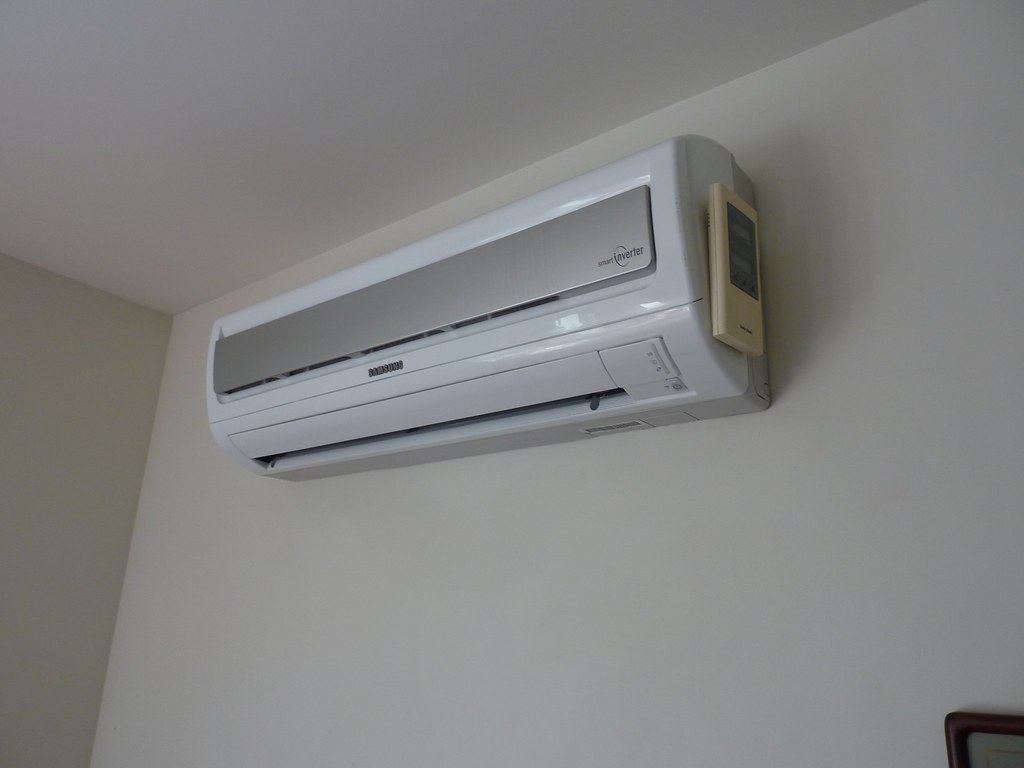
Choosing ductless AC offers several compelling benefits, making it an attractive option for many. Energy efficiency stands out as a top advantage, with ductless systems using less power due to their smaller size and the ability to cool specific areas. Their space-saving design is another plus, especially in homes or buildings where space is at a premium or where traditional ductwork installation is not feasible.
Additionally, ductless AC systems contribute to improved indoor air quality by directly cooling the air in each room, thus reducing the potential for dust and allergens to circulate throughout the property. These benefits collectively make ductless AC an excellent choice for both new installations and upgrades to existing systems.
Energy efficiency
Ductless AC systems are renowned for their high energy efficiency. Unlike traditional systems, which often lose energy through ductwork, ductless units deliver cooled air directly to each room, drastically reducing energy consumption. This higher efficiency can lead to significant savings on utility bills, positioning ductless AC as both an eco-friendly and cost-effective cooling solution.
Space-saving design
The compact size of ductless AC units makes them an ideal choice for small spaces or areas where installing ductwork is impractical. Each indoor unit can be mounted on walls, ceilings, or even floors, offering versatile installation options that preserve valuable living space. This design flexibility is particularly beneficial for adding air conditioning to older homes, new additions, or commercial spaces with limited room for traditional ducts.
Improved indoor air quality
Ductless AC systems are beneficial for improving indoor air quality. With no ducts to gather dust, allergens, and other airborne particles, the air delivered to your space is cleaner and healthier. Many models are equipped with built-in filters that further purify the air, capturing contaminants and enhancing the overall air quality in your home or office.
This feature is especially important for individuals with allergies or respiratory issues, making ductless AC a considerate choice for a healthier living environment.
How much does ductless AC cost?
The cost of ductless AC systems varies, typically ranging from $3,000 to $5,000 per unit for the initial purchase. Installation costs can add an additional $500 to $2,000 per unit, depending on factors such as complexity and location. Operating costs are relatively low, estimated at $40 to $120 monthly, which reflects the system’s energy efficiency.
These costs can be influenced by several factors, including the number of indoor units needed, the brand and model selected, and the specific installation requirements of the home or building.
Initial purchase: $3,000 to $5,000 per unit
The upfront cost for a ductless AC unit typically falls between $3,000 to $5,000. This range is influenced by the system’s capacity, special features, and energy efficiency levels, including options that offer both cooling and heating capabilities.
Installation: $500 to $2,000 per unit
The cost of installing a ductless AC system can range from $500 to $2,000 per unit. Factors affecting this price include the installation’s complexity, the specific type of ductless unit chosen, and any necessary structural changes to accommodate the system.
Operating costs: $40 to $120 monthly
Monthly operating expenses for running a ductless AC system are estimated to be $40 to $120. These costs vary based on usage frequency, local electricity rates, and the efficiency of the system, highlighting the importance of selecting energy-efficient models to maximize savings.
What factors influence the cost of ductless AC?
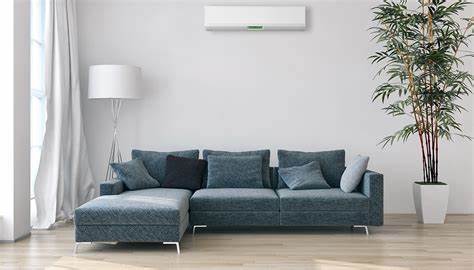
Several key factors can significantly impact the overall cost of ductless AC systems. The number of indoor units required is a primary consideration, as more rooms mean more units, increasing both purchase and installation costs. The brand and model of the system also play crucial roles, with premium brands typically commanding higher prices due to their reputation for quality and reliability.
Additionally, installation complexity can vary, especially in older homes or buildings, where additional work may be needed to accommodate the system. These elements combined dictate the initial investment and long-term operating expenses associated with ductless air conditioning.
Number of indoor units
The total cost of a ductless AC system escalates with the number of indoor units required. Each unit added not only increases the equipment cost but also the labor involved in installation, directly influencing the final price.
Brand and model
Choosing the brand and model of your ductless AC system can significantly affect its cost. Models equipped with advanced features and higher energy efficiency ratings might have a higher upfront cost but can offer superior performance and savings in the long run.
Premium brands cost more
Opting for premium brands usually means higher initial expenses due to their reputation for quality, longevity, and cutting-edge technology. However, the investment in a premium brand can lead to lower maintenance and operational costs over the lifespan of the system.
Installation complexity
The installation complexity of a ductless AC system can vary greatly and has a direct impact on cost. The necessity for electrical upgrades, challenges in placing the outdoor unit, and integrating the system within existing architectural constraints can all elevate the installation price.
Older homes may require additional work
Installing ductless AC in older homes may necessitate additional modifications or updates, such as structural changes or electrical system enhancements to accommodate the new system. This extra work can significantly increase the overall installation cost.
How to save money on ductless AC?
Saving money on ductless AC involves a few strategic choices. Opting for the right size unit is crucial; oversized units are more expensive and less efficient. It’s also beneficial to invest in energy-efficient models with higher SEER ratings, which use less power and reduce monthly bills.
Additionally, homeowners can take advantage of various rebates and incentives offered by federal, state, and local programs designed to encourage energy efficiency. By considering these factors, individuals can enjoy the benefits of ductless AC systems while minimizing their financial impact.
Choosing the right size
Selecting a ductless AC unit that perfectly matches your space requirements is crucial for efficiency. A unit that’s too small struggles to cool effectively, while one that’s too large incurs unnecessary costs and operates inefficiently.
Oversized units are more expensive
An oversized unit not only has a higher upfront cost but also leads to increased operating expenses. Frequent cycling on and off can escalate wear and tear, potentially reducing the system’s lifespan and efficiency.
Looking for energy-efficient models

Focusing on energy-efficient models can lead to significant savings in the long run. These units consume less power to cool your space, directly impacting your utility bills in a positive way.
Models with higher SEER ratings
Opting for units with higher SEER (Seasonal Energy Efficiency Ratio) ratings ensures greater efficiency. They offer more cooling for each unit of electricity used, making them a cost-effective choice over their lifespan.
Taking advantage of rebates and incentives
Utilizing rebates and incentives from federal, state, and local programs can considerably reduce the initial investment in a ductless AC system. These financial incentives are designed to encourage the adoption of energy-efficient HVAC solutions.
Federal, state, and local programs
Investigating the various incentive programs available can yield significant savings. Each program has specific qualifications and rewards, making it beneficial to research and apply for those for which you are eligible.
Comparing ductless AC to traditional systems
When comparing ductless AC systems to traditional HVAC systems, several key differences stand out. Ductless AC, with its lack of extensive ductwork, offers a more flexible and less invasive installation process, making it ideal for older buildings or additions where installing ducts is impractical. In terms of energy efficiency, ductless systems often outperform traditional systems due to their ability to cool specific areas without the energy loss associated with ductwork.
Aesthetically, ductless units are more compact and can be less noticeable, though some may prefer the hidden nature of traditional systems. While initial costs for ductless AC might be higher, the long-term savings in energy bills can offset these expenses, making them an attractive option for those focused on efficiency and customization.
Upfront costs vs. long-term savings
The initial investment in ductless AC systems is generally higher than that for traditional HVAC systems, largely due to the cost of the units and the installation process. However, the long-term savings realized through reduced energy bills—courtesy of their superior efficiency—often outweigh these upfront costs. Ductless systems enable precise cooling of specific zones, minimizing energy wastage and leading to significant savings over the lifespan of the system.
Space requirements and aesthetics
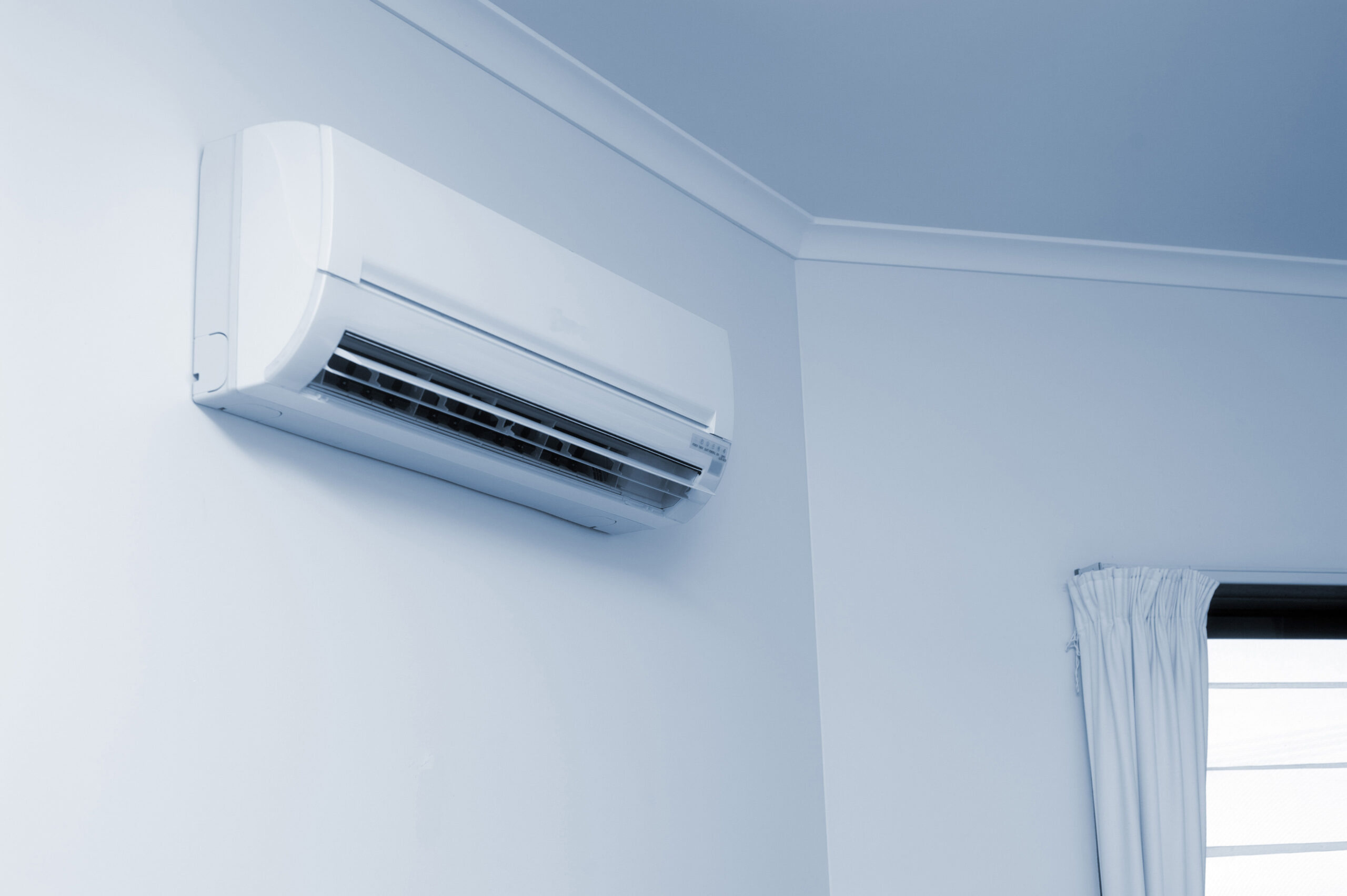
Ductless AC systems are designed with minimal space requirements in mind, making them an ideal choice for smaller homes or rooms where saving space is a priority. Their compact size and versatile mounting options offer a distinct advantage in both aesthetics and functionality. Unlike traditional systems, which necessitate extensive ductwork hidden within walls or ceilings, ductless units can be subtly integrated into the room’s decor or strategically placed to minimize their visual presence, blending efficiency with style.
Maintenance and repair costs
Maintaining a ductless AC system is typically less complicated and costly than dealing with traditional HVAC systems, mainly due to the absence of ductwork. Regular cleaning and servicing are essential to keep the system running efficiently, which can be relatively straightforward and inexpensive. However, potential issues like refrigerant leaks can arise, requiring professional repair that may incur additional costs.
Overall, while ductless systems may have a higher upfront cost, their maintenance and repair expenses tend to be lower, contributing to their cost-effectiveness over time.
Regular cleaning and servicing
Regular cleaning and servicing are crucial for maintaining the efficiency and longevity of ductless AC systems. This maintenance typically includes cleaning the filters and conducting checks to identify any potential issues early on. Engaging in these preventative measures can significantly extend the system’s lifespan and avert costly repairs.
Potential for refrigerant leaks
Although ductless AC systems are known for their reliability, they can still be susceptible to refrigerant leaks. Such leaks can compromise the system’s efficiency and its ability to cool effectively. Prompt detection and repair of refrigerant leaks are essential for sustaining the system’s performance and avoiding more extensive, expensive repairs later on.
Future trends in ductless AC technology
The future of ductless AC technology is poised for innovation, with trends leaning towards smart technology integration and advances in energy efficiency. Smart technology will allow for more precise control and monitoring of cooling systems, enabling users to optimize their energy use and improve comfort levels remotely. Additionally, ongoing advancements in energy efficiency are expected to make ductless AC systems even more cost-effective and environmentally friendly, reducing carbon footprints and operational costs.
These developments signify a promising direction for ductless AC technology, aiming to enhance user experience and sustainability.
Smart technology integration
Smart technology integration is revolutionizing ductless AC systems, promising a future where users can effortlessly control their cooling environments. Anticipated features include advanced connectivity for smartphone control and seamless integration with home automation systems. This will empower users to adjust temperatures remotely, track energy consumption with precision, and receive proactive maintenance notifications, ensuring optimal comfort and efficiency.
Advances in energy efficiency
The drive towards advances in energy efficiency is shaping the next generation of ductless AC systems. Future models are expected to achieve higher SEER ratings, leveraging innovations in compressor technology, eco-friendly refrigerants, and heat exchange mechanisms. These advancements aim to significantly lower energy use and operational costs while minimizing the environmental footprint of cooling solutions, aligning with broader sustainability objectives.
Mini Split AC Unit Installation Cost by Type
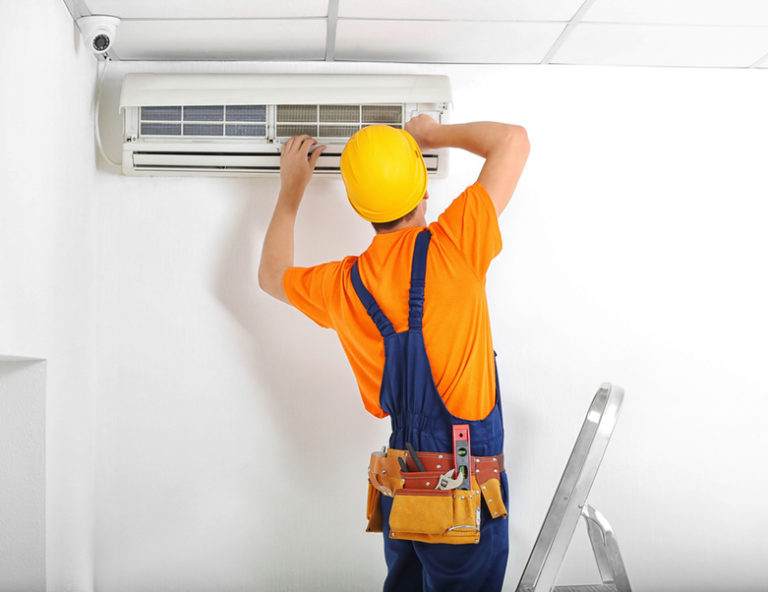
The installation cost of mini split AC units can vary widely depending on the type of unit selected. Wall-mounted units are often the most cost-effective and commonly used, making them a popular choice for residential installations. Floor-mounted and ceiling cassette models provide alternative options that may suit specific architectural styles or space requirements but can come with higher installation costs due to their complex placement and integration.
Ceiling-mounted systems, while less common, offer a discreet cooling solution for larger spaces, though at a premium installation cost. Additionally, the choice between single-zone and multi-zone systems impacts the overall cost, with multi-zone setups requiring more extensive installation work but offering customized cooling across different areas. Understanding these cost differences is crucial for selecting the right ductless AC system to meet both cooling needs and budget constraints.
Wall-Mounted
Wall-mounted mini split AC units are favored for their versatility and cost-effectiveness, making them a go-to choice for residential cooling. They are straightforward to install on most exterior walls, offering efficient cooling without significant structural alterations.
Floor-Mounted
Floor-mounted units cater to scenarios where wall space is scarce or wall aesthetics need to be preserved. These units blend into the lower part of the room and require proximity to an exterior wall for the connecting conduit, providing a subtle yet effective cooling solution.
Ceiling Cassette
Ceiling cassette units are designed to be installed flush within the ceiling, rendering them nearly invisible and seamlessly integrated into a room’s design. Ideal for larger spaces, they ensure even air distribution but demand a more intricate installation process compared to wall-mounted units.
Ceiling-Mounted
Distinguishable from ceiling cassettes, ceiling-mounted systems are attached to the ceiling surface, protruding slightly into the room. They are well-suited for environments with high ceilings or in instances where other installation methods are impractical, offering robust cooling from above.
Single-Zone
Single-zone configurations are tailored to cool a single area or room efficiently. This setup involves one outdoor ac unit linked to one indoor unit, providing a simple yet effective solution for focused cooling requirements.
Multi-Zone
Multi-zone configurations allow for one outdoor unit to connect to multiple indoor units, enabling individual temperature control across different rooms or zones. This flexibility and customization come at a higher initial cost due to the complexity of connecting several indoor units to a single outdoor unit.
Mini Split AC Unit Installation Cost by Size
The installation cost of mini split AC units is significantly influenced by their size, typically measured in British Thermal Units (BTUs). Smaller units, suitable for compact spaces, generally incur lower installation costs compared to larger units that provide higher cooling capacities for more extensive areas. The optimal size for efficient cooling is determined by various factors, including the room’s square footage, ceiling height, and aspects such as insulation quality and sun exposure.
Correct sizing is essential; an undersized unit will struggle to cool a space effectively, while an oversized unit can lead to increased energy consumption and higher costs. Therefore, engaging a professional to accurately determine the right size can ensure efficient operation and cost-effective cooling.
Mini Split AC Unit Installation Cost by Number of HVAC Zones
The cost to install a mini split AC system varies significantly with the number of HVAC zones it’s designed to cover. A single-zone system, serving one specific area, is the most straightforward and cost-effective option. However, as the number of zones increases, so does the complexity and price of installation.
Multi-zone systems, which can regulate temperatures in multiple rooms independently, require more extensive setup involving additional indoor units and potentially more complex wiring and conduit placement. This customization allows for targeted cooling and heating, offering both comfort and efficiency, but at a higher initial investment. Careful planning and consultation with HVAC professionals can help balance the benefits of multi-zone systems against the increased costs, ensuring a solution that meets both comfort needs and budget considerations.
Brand
The brand of a mini split AC unit significantly impacts its installation cost. Premium brands are often associated with higher prices due to their reputation for superior quality, longevity, and innovative features. Opting for a renowned brand might elevate the upfront cost but typically ensures greater reliability and more comprehensive warranty coverage.
Efficiency Rating
The efficiency rating, indicated by the SEER (Seasonal Energy Efficiency Ratio), is a critical factor in the cost equation. Systems with higher SEER ratings boast greater energy efficiency, resulting in lower monthly utility expenses. While these high-efficiency models come with a steeper initial price tag, the long-term savings on energy bills can make them a cost-effective choice.
Location in the Home

The location in the home where the mini split AC unit is to be installed also dictates installation costs. Areas that are difficult to access or require significant modifications for unit placement can lead to increased labor and materials costs. Careful selection of the installation site is essential for controlling costs, highlighting the importance of strategic planning in the installation process.
Additional Costs Associated With Mini Split AC Unit Installation
Beyond the basic costs of purchasing and installing a mini split AC unit, several additional expenses can affect the overall investment. Upgrades to more advanced models or features can increase the initial price but may offer better efficiency or functionality. Permits may be required for installation, depending on local regulations, adding to the project’s cost.
The removal of an existing AC unit, if necessary, involves additional labor and disposal fees. Furthermore, the operating costs, including energy consumption and routine maintenance, should be considered for a comprehensive understanding of the total expense. Lastly, the installation process itself could uncover the need for electrical upgrades or other unexpected modifications, potentially increasing the project’s complexity and cost.
Being aware of these potential additional costs can help in planning a budget that accurately reflects the total investment in a mini split AC system.
Upgrades
Upgrades to a mini split AC system, such as opting for units with higher SEER ratings or incorporating smart technology features, can significantly enhance both performance and efficiency. While these upgrades increase the initial investment, they may lead to considerable energy savings and a more tailored user experience over time.
Permits
The requirement for permits during the installation of a mini split AC system varies by jurisdiction, influenced by local building codes and regulations. Securing these permits is a critical step, with costs and requirements differing across regions, adding an additional layer to the planning and budgeting process.
Removal of Existing AC Unit
Removing an existing AC unit involves extra labor and potential disposal fees, a necessary step when upgrading to a more efficient mini split system. This process contributes to the overall cost of transitioning to a new cooling solution.
Operating Costs
The operating costs associated with a mini split AC system cover energy usage and regular maintenance. These ongoing expenses are determined by the system’s efficiency, usage patterns, and local electricity rates, playing a significant role in the total cost of ownership.
How many hours does it take to install a mini-split?
Installation time for a mini-split system can range from 4 to 8 hours, depending on the installation’s complexity, the specific unit type, and any required modifications to the property. This variability highlights the importance of professional assessment and installation.
What are the disadvantages of a mini-split system?
Despite their advantages, mini split AC systems have some disadvantages, including the higher upfront costs compared to traditional systems, the potential for aesthetic concerns due to visible indoor units, and the necessity for professional installation to ensure proper functioning and maintain warranty coverage.
Frequently Asked Questions (FAQs)
Navigating the world of ductless AC systems can raise numerous questions for homeowners and business owners alike. From understanding the basics of how these systems work to evaluating the costs associated with installation, maintenance, and operation, there’s a lot to consider. Additionally, potential buyers often wonder about the best type of system for their specific needs, how to maximize energy efficiency, and what installation entails.
Addressing these FAQs is crucial for making informed decisions about investing in a ductless AC system, ensuring it meets both comfort and budgetary requirements. This section aims to provide clear, concise answers to common queries, helping demystify the process and highlight the benefits of ductless air conditioning technology.
What Size Mini Split AC Unit Do I Need?
Determining the right size for a mini split AC unit is crucial for ensuring efficient and effective cooling. The perfect size is influenced by a variety of factors, including the total square footage of the space, room layout, quality of insulation, size and placement of windows, and local climate conditions. A unit that’s too small will struggle to adequately cool the space, while one that’s too large can lead to excess energy consumption and poor humidity control.
Professionals often use a calculation based on British Thermal Units (BTUs) to align the unit’s cooling capacity with the room’s specific requirements. Engaging with an HVAC professional to evaluate these elements can help you choose a mini split AC unit that optimizes performance and energy efficiency, tailored to your unique environment.
Multi-split Ductless AC system
A Multi-split Ductless AC system offers the ability to connect multiple indoor units to a single outdoor unit, enabling a highly customizable cooling solution across different rooms or zones. This system’s versatility is perfect for accommodating the unique cooling needs of each space, providing personalized comfort and enhanced efficiency. Ideal for buildings with diverse room sizes and usage patterns, multi-split systems allow for individual temperature control in each zone.
This capability not only improves comfort levels but also optimizes energy use, leading to significant savings in operational costs when compared to traditional centralized AC systems.
Difference Between Ductless AC and Central AC
The key distinction between ductless AC and central AC systems lies in their configuration and installation needs. Ductless AC, or mini-split systems, feature an outdoor compressor linked to one or more indoor air handlers through a conduit, bypassing the need for extensive ductwork. This makes ductless AC an excellent option for older homes, additions, or areas where installing ducts is either challenging or too disruptive.
On the other hand, central AC systems depend on a network of ducts to circulate cooled air throughout a building, necessitating a more intricate and typically costlier installation. While central AC is suited for larger homes or buildings requiring a whole-house cooling solution, ductless systems provide adaptability and tend to be more energy-efficient, thanks to the elimination of duct-related energy losses. Ultimately, the choice between ductless and central AC hinges on the specific requirements of the space, budget constraints, and the preferred complexity of installation.
Ductless HVAC Maintenance
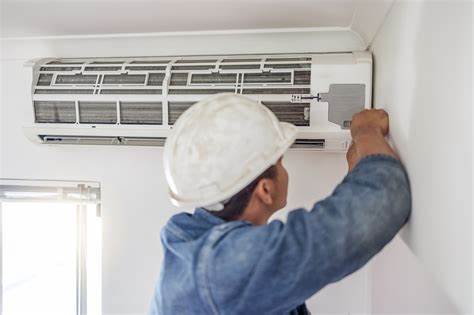
Maintaining a ductless HVAC system is crucial for ensuring its efficiency and longevity. Regular maintenance tasks include cleaning or replacing the air filters, a vital step every few months to prevent airflow obstruction and uphold air quality. Attention to the outdoor unit is equally important, involving clearing away debris and inspecting for any damage that could hinder its function.
Moreover, checking the refrigerant levels and cleaning the coils are essential practices to avert performance issues. Professional AC maintenance, recommended annually, plays a key role in thoroughly examining and tuning up the system and identifying and resolving any potential concerns promptly. Adhering to a consistent maintenance routine not only minimizes the likelihood of expensive repairs but also extends the system’s lifespan, guaranteeing optimal performance throughout the year.
Breathe Easy with Ductless Air Conditioner
Ditching traditional central air conditioning for a ductless AC system might be the cool change your home craves. These compact units cool specific areas efficiently, making them ideal for spaces without existing ducts or uneven cooling zones. While the initial cost can vary depending on factors like the number of units needed and installation complexity, ductless AC boasts long-term benefits. They’re renowned for their energy efficiency, translating to lower utility bills and a greener footprint. Their space-saving design allows for versatile mounting options, freeing up valuable living space.
If you’re considering a ductless AC system, Callidus Air can help! Our team of experts can assess your needs, recommend the perfect system for your space, and provide expert installation to ensure optimal performance. Contact Callidus Air today for a free consultation and experience the ductless AC difference!

